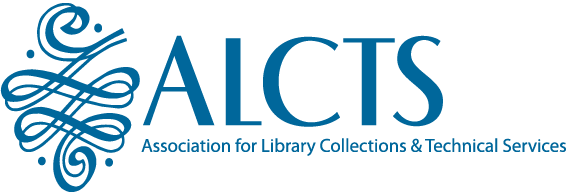Interviewer (Natalie): Hello everyone. My name is Natalie Sommerville and I am Head of the Monographic Cataloging Section at Duke University Libraries. Today my colleague, Jacquie Samples, who is the Head of the Electronic Resources and Serials Cataloging Section and I are speaking on behalf of the ALA-ALCTS Continuing Resources Section’s Education, Research, and Publications Coordinating Committee.
There have been many reports from ALCTS 101 orientations during the ALA meetings that attendees do not know what continuing resources are. In this video, Jacquie is going to present the definition of continuing resources in easy steps with real life examples and we hope by the end of this video, a majority of you who are watching this video will have a better idea of the definition of continuing resources.
So, Jacquie, let’s get started. Would you please tell us what a continuing resource is?
Jacquie: A continuing resource is a publication that intends to be issued with no predetermined conclusion, and generally carries numbering, dates, or both. Serials and integrating resources are types of continuing resources. Serials are issued in separate parts, while integrating resources do not have separate issues. One of the main criteria that differentiate continuing resources from monographic resources is the publishers’ intention.
Again, the difference between something like a multivolume monograph and a continuing resource is that for the monograph, it is generally known how many volumes will make up the set when the resource is published. If we think of a title such as Chief Works, and Others by Niccolò Machiavelli, which is a three-volume set, we know that the editor had predetermined the number of volumes when the first was published; so even though it took several years for the entire resource to be released, we knew ahead of time how many volumes would be included. For continuing resources, that is not the case.
Some examples of serials are familiar publications like Newsweek, Time magazine, and other magazine-rack publications. However, there are also many scholarly or scientific journals, such as JAMA, that are also considered to be serials.
Natalie: Any examples of serials that you can show us?
Jacquie: Yes, we have some great example here, such as Library Resources & Technical Services and The Journal of Library Metadata. Each issue of these titles has enumeration and chronology (or volumes numbering and dates). If we looked inside, we’d know that there is information that shows that the title is intended to be published for the foreseeable future. Both of these titles intend to be published quarterly.
Natalie: Thank you! Those are great examples. How about any examples of integrating resources?
Jacquie: Certainly! I have a very good example here that I can show you. This is the loose-leaf version of AACR2, which started being published in 2002 and was updated annually until 2005. When new pages were published, the owner of the resource was expected to find and remove updated pages, and interfile the new pages. So, unlike the two serials we just looked at, where new issues can sit on shelf next to earlier ones; for integrating resources, the new issues become part of the original resource. We cannot see new issues separately from the older ones.
A more contemporary version of an integrating resource is an online updating resource, such as RDA which is kept up-to-date on the RDA Toolkit. When rules are edited and updated, they become part of the RDA Toolkit. But, users can’t really go back and see previous iterations of the Toolkit.
I hope the viewers of this video now have a better idea of what continuing resources mean.
Natalie: I’m sure they do! Thank you very much for thoroughly explaining to us the definition of continuing resources.
Jacquie: You are very welcome!
Video Credits
This video has been made possible by:
The ALA-ALCTS Continuing Resources Section's Education, Research, and Publications Coordinating Committee. Chair, Mavis Molto. Main contributor, Nanako Thomas.
Script
Nanako Kodaira Thomas, Catalog Librarian for Japanese Language Resources, Duke University Libraries and Jacquie Samples, Head, Electronic Resources and Serials Cataloging Section, Duke University Libraries
Presenters
Jacquie Samples, Head, Electronic Resources and Serials Cataloging Section, Duke University Libraries and Natalie Sommerville, Head, Monographic Cataloging Section, Duke University Libraries.


